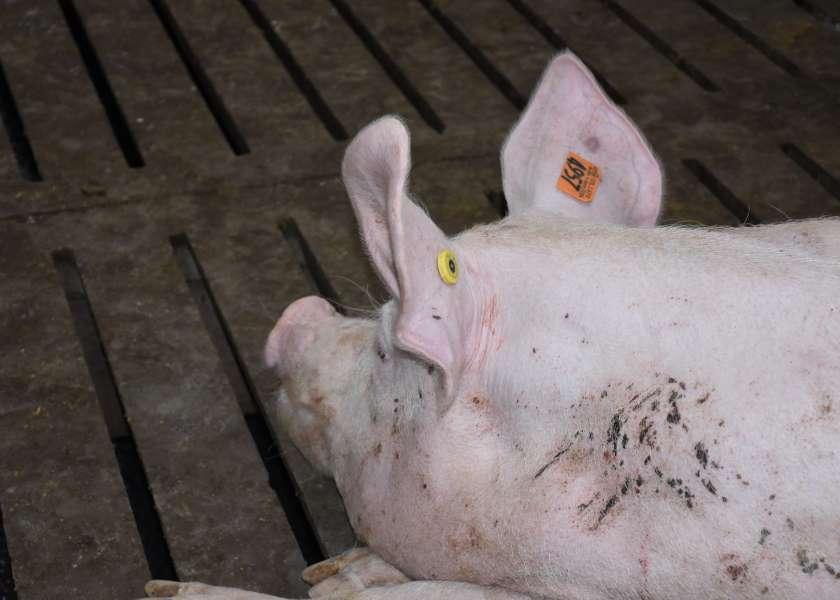Published
1 year agoon
By
Faith Laiche
The latest Swine Disease Reporting System report has some people scratching their heads. For the first time in recent memory, porcine circovirus type 2 (PCV2) jumped into the top 10 most-diagnosed diseases list at the Iowa State University Veterinary Diagnostic Lab. At No. 9, it surpassed porcine epidemic diarrhea virus and came in just behind Mycoplasma hyopneumoniae.
Porcine circovirus associated disease (PCVAD) can be caused by any PCV2 strain. When PCVAD first showed up in the U.S. in 2006-2007, it was devastating, says Greg Cline, DVM, senior key account veterinarian with Boehringer Ingelheim.
“The most striking clinical sign you would see was just pigs’ failure to thrive. They become very poor pigs very quickly, and very resistant, as you would expect with any virus, to any treatment,” Cline says.
When it was first introduced, Paul Sundberg, executive director of the Swine Health Information Center (SHIC), notes it had the promise of being a very impactful disease.
“To their credit, the animal health companies quickly recognized that and developed safe and effective vaccines. In general, PCV2 has been and can be effectively managed by good vaccination practices,” Sundberg says.
After commercial PCV2a vaccines hit the market, the industry discovered they were incredibly effective against all strains of PCV2 – including PCV2a, PCV2b and PCV2d.
From February to March 2023, there was an increase in the detection of porcine circovirus by PCR. The increase was mainly being driven by positive cases in the adult/sow category, where positive test results spiked from 38.53% in February to 50.52% in March.
“What’s concerning about the change in PCV2 is that everything was so good for so long. The vaccines were very effective,” Cline says. “This change in sows is concerning because this is a virus that can be transferred in utero. As a production veterinarian, that’s problematic. If the virus is transmitted in utero, I now have pigs that are infected before I can ever get vaccines into them. And that, of course, is never a good situation.”
Giovani Trevisan, principal investigator for the SDRS report and research assistant professor at Iowa State University, points out that while they did see an increase in detection from the adult/sow group, they still working with the advisory group for gather insight from the field on what is happening to cause the increased detection.
“The data is pointing to the direction that some producers/production systems may have changed their monitoring and surveillance approach,” Trevisan says. “It looks like a more intensive testing frequency, probably associated with monitoring is contributing to this increased positivity. We are still gathering the advisory group comments to sort this out.”


TWO 90-POINT RIDES HIGHLIGHT SEMI FINAL 1 AT CHEYENNE FRONTIER DAYS RODEO


KOE WETZEL DROPS “HATCHET” VIDEO OFF CELEBRATED 9 LIVES


PHIL VASSAR AND JEFFREY STEELE’S”LIKE A MAN’S SUPPOSED TO”


JORDAN FLETCHER RELEASES LATEST TRACK “FALL IN THE SUMMER”


LEE BRICE BRINGS SUMMER NOSTALGIA WITH LATEST RELEASE “SUMMER OF US” OUT NOW


ALLIE COLLEEN STRIKES GOLD WITH “BOYS LIKE YOU,” CALLING OUT PRETENDERS IN COWBOY HATS


NICK HICKMAN’S LATEST RELEASE, “LESSONS LEARNED,” IS A TRIBUTE TO LIFE’S HARD-WON WISDOM


MCBRIDE & THE RIDE RELEASES NEW VERSION OF “NO MORE CRYIN” FROM THEIR FORTHCOMING LIVE EP OUT OCTOBER 18TH















SUBSCRIBE TO
TENN TEXAS NEWSLETTER
SEND A PRAYER
SEND A PRAYER
PRAYER REQUEST

